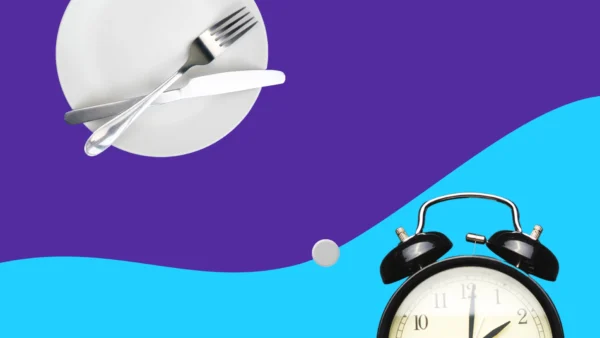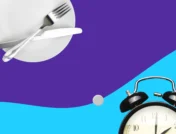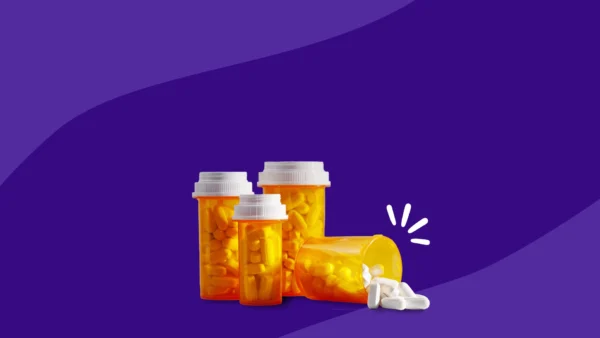Key takeaways
Jardiance and Tradjenta are two different medicines used to help people with Type 2 diabetes manage their blood sugar levels.
Jardiance gets rid of sugar through the urine, and Tradjenta helps the body use insulin better.
Choosing between Jardiance and Tradjenta depends on what works best for the individual, considering overall health, cost, and side effects.
Combination pills like Glyxambi and Trijardy XR make treatment easier for patients who are prescribed Jardiance and Tradjenta together.
Jardiance (empagliflozin) and Tradjenta (linagliptin) are two prescription medications used to manage Type 2 diabetes, a condition characterized by high glucose or blood sugar levels. Type 2 diabetes is a complex disease that may lead to serious health problems if left untreated, including heart disease, nerve damage, eye problems, and kidney damage, among others. For some people with Type 2 diabetes, it can be difficult to control blood sugar levels with just one medication alone. Therefore, multiple medications, alongside diet and exercise, may be recommended in an appropriate treatment plan.
While learning about different treatments for Type 2 diabetes, you may have heard about Jardiance and Tradjenta as potential brand-name options. Healthcare providers might prescribe patients either drug or both of these drugs to help manage high blood sugar levels, which, in turn, may help reduce the risk of complications from diabetes. But are they the same? And, if not, how do they differ?
Continue reading to learn more about these medications, when they might be used together, and their potential side effects.
Are Jardiance and Tradjenta the same thing?
Jardiance and Tradjenta are prescription drugs approved by the Food and Drug Administration (FDA) to manage Type 2 diabetes. They are not used to treat Type 1 diabetes. Although they both share similar effects of controlling high blood sugar levels, they are not the same medication. They contain different active ingredients and work in different ways.
Jardiance contains the active ingredient empagliflozin, which belongs to a class of medications known as sodium-glucose cotransporter 2 (SGLT2) inhibitors. By blocking the SGLT2 protein in the kidneys, empagliflozin prevents blood sugar from being reabsorbed into the blood. As a result, empagliflozin helps the kidneys remove sugar from the bloodstream through urine.
Tradjenta, on the other hand, contains linagliptin, which is a dipeptidyl peptidase-4 (DPP-4) inhibitor. It helps control blood sugar levels by encouraging the body to release more insulin, a hormone that lowers blood sugar, and by decreasing the amount of glucagon, another hormone that raises blood sugar, made in the pancreas. This combined action helps to keep blood sugar levels in a healthier range.
Is Jardiance or Tradjenta better?
When choosing between Jardiance and Tradjenta for managing Type 2 diabetes, one isn’t universally better. Their effectiveness varies between individuals and depends on several factors, including a person’s overall health and medical history. One medication may be preferred over the other depending on preference, cost, and potential side effects.
Standard dosages
Both medications are taken orally. However, the standard dosage for Jardiance is 10 milligrams (mg) once daily in the morning, with or without meals. The daily dosage may be increased to 25 mg based on whether the individual’s blood sugar levels are still uncontrolled and whether or not they’re experiencing any serious side effects on the lower dosage. Tradjenta is also taken as an oral tablet. However, the standard dosage for Tradjenta is 5 mg once daily, regardless of meals.
Indications
Tradjenta was FDA approved in 2011 to treat Type 2 diabetes in adults 18 and older. Jardiance is a newer drug than Tradjenta and was approved in 2014 for Type 2 diabetes in adults and children 10 and older. Jardiance is also approved for two other indications: to reduce the risk of cardiovascular death in adults with heart failure or heart disease and to reduce the risk of end-stage kidney disease, death, and recurring hospital visits in adults with chronic kidney disease.
Cost
For most people, Jardiance and Tradjenta are covered by health insurance. Neither is available as a cheaper generic alternative in the United States. The average retail cost of Jardiance is around $837 for a 30-day supply of 25 mg tablets, while the average retail cost of Tradjenta is around $744 for a 30-day supply of 5 mg tablets. These prices can vary based on location, pharmacy, and available discounts. In some cases, using a prescription discount card may help offset the cost of these medications without insurance. With SingleCare coupons, you can get Jardiance for as low as $526 and Tradjenta for as low as $516 for a 30-day supply.
Side effects
Like other medications, Jardiance and Tradjenta can cause side effects. However, their common side effects differ. Common side effects of Jardiance include urinary tract infections, dehydration, and genital infections. Tradjenta may cause common side effects like sore throat, runny or stuffy nose, cough, and diarrhea.
Risks and restrictions
Jardiance and Trajdjenta may also carry serious risks. Both medications share a potential risk of serious side effects like low blood sugar (hypoglycemia) and allergic reactions. Jardiance may not be suitable for individuals with serious kidney problems and can increase the risk of urinary tract infections or amputations. Tradjenta, on the other hand, may need to be avoided in people with a history of inflammation of the pancreas (pancreatitis) and also carries a risk of joint pain and heart failure.
Compare Jardiance vs. Tradjenta |
||
|---|---|---|
| Jardiance | Tradjenta | |
| Drug class | SGLT2 inhibitor | DPP-4 inhibitor |
| Standard dosage and forms | 10 mg oral tablet taken once daily in the morning with or without food
Dosage may be increased to 25 mg once daily |
5 mg oral tablet taken once daily with or without food |
| Risks and restrictions to consider |
|
|
| Side effects |
|
|
| Average cost without insurance | $837 | $744 |
Patients should consult their healthcare provider to determine the best treatment option, as both medications have unique profiles that should be considered on an individual basis.
Taking Jardiance and Tradjenta together
In many cases, a healthcare provider may recommend lifestyle changes, such as a healthy diet and regular exercise, alongside one medication to treat Type 2 diabetes. However, for improved blood sugar control, more than one medication may be needed. Jardiance and Tradjenta are often prescribed together as they work in different ways.
Although Jardiance and Tradjenta may be prescribed as separate drugs if needed, combination drugs containing the active ingredients of Jardiance and Tradjenta are available. Combining these medications into a single tablet may help reduce the burden of an increased pill count, making it more convenient to get the necessary diabetes treatment.
Jardiance and Tradjenta combination drugs
Currently, two combination medications contain the active ingredients of Jardiance and Tradjenta. These brand-name medications are Glyxambi and Trijardy XR.
Glyxambi (empagliflozin and linagliptin)
This dual-component medication may be prescribed to replace separate doses of Jardiance and Tradjenta. It received FDA approval in 2015 to improve blood sugar control in adults with Type 2 diabetes as part of a combination therapy option with diet and exercise. This combo drug may be more cost-effective than taking two separate pills.
Glyxambi tablets are available in strengths of 10 mg empagliflozin/5 mg linagliptin and 25 mg empagliflozin/5 mg linagliptin. It is taken as a once-daily treatment in the morning with or without food. The dosage may be increased for further glucose control in people who tolerate the medication well. It should not be used in people with an allergy to any of the ingredients in the medication or people on dialysis.
Trijardy XR (empagliflozin, linagliptin, and metformin extended-release)
This medication is a relatively new medication that combines three well-established medicines: empagliflozin, linagliptin, and extended-release metformin hydrochloride. It works as a triple-combination tablet that uses three medications with different mechanisms of action.
A healthcare provider may prescribe Trijardy XR to reduce the daily pill count and take advantage of the effects of the individual components, especially for patients who might otherwise take all three drugs separately. This newly approved treatment offers convenience, as it combines three antidiabetic medications in one pill. However, it should be used alongside an appropriate diet and exercise plan.
The standard dosage of Trijardy XR is one tablet once daily with a meal in the morning. The dosage may be adjusted depending on the individual’s kidney function, blood sugar levels, and how well they tolerate the medication. Trijardy comes in tablets that contain the following amounts of each drug:
- 5 mg empagliflozin / 2.5 mg linagliptin / 1,000 mg metformin HCl extended-release
- 10 mg empagliflozin / 5 mg linagliptin / 1,000 mg metformin HCl extended-release
- 12.5 mg empagliflozin / 2.5 mg linagliptin / 1,000 mg metformin HCl extended-release
In addition to the common side effects of empagliflozin and linagliptin, Trijardy XR may also cause side effects related to metformin. For example, metformin may lead to a decrease in vitamin B12 levels in individuals taking it. Therefore, it is recommended to check vitamin B12 levels every two to three years to identify and manage any deficiencies that may arise.
Combination drugs like Glyxambi and Trijardy XR may help simplify medication regimens for people with Type 2 diabetes by combining multiple diabetes medications into a single pill. However, the added convenience and benefits may come with downsides. Having multiple active ingredients in these medications means they also carry the potential for the side effects associated with each drug.
Studies supporting the use of Jardiance and Tradjenta together
A systematic review and meta-analysis looked at six randomized clinicals to determine the effectiveness and safety of using Jardiance and Tradjenta together for adults with Type 2 diabetes. The results showed that taking these two drugs together was better at lowering blood sugar levels, with the combination leading to a significant drop in HbA1c (a marker for long-term blood sugar control) and fasting blood sugar over 24 weeks. The results meant that people taking both medications were more likely to get their HbA1c levels below 7%, a target for good diabetes control, than those taking just one drug.
The study also found that patients lost more weight with the combination therapy compared to just taking linagliptin alone, but there was no significant difference when compared to taking empagliflozin alone. In addition, the safety of the drug combination was similar to that of the individual medications, suggesting that this two-in-one approach doesn’t come with additional risks.
It’s always important to consult a healthcare provider before starting combination therapy. They can provide personalized advice based on past health history, other medications being taken, and other factors.
Bottom line
Jardiance and Tradjenta are two separate medications often used in tandem to improve blood sugar control in people with Type 2 diabetes. While both drugs are effective on their own, using them together can offer additional benefits for managing diabetes. A once-per-day combination drug like Glyxambi or Trijardy XR could make it simpler for people to follow their treatment plan while effectively managing their diabetes.
If you’ve been prescribed a Tradjenta and Jardiance combination drug, you may want to be aware of the potential side effects and discuss them with a healthcare provider. They can help guide you on the best approach for combining Jardiance and Tradjenta safely.
Sources
- Information on dipeptidyl peptidase-4 (DPP-4) inhibitors, Food and Drug Administration (2016)
- Jardiance highlights of prescribing information, Food and Drug Administration (2023)
- Tradjenta highlights of prescribing information, U.S. Food and Drug Administration (2023)
- Glyxambi (Empagliflozin/Linagliptin): A dual-acting oral medication approved for the treatment of patients with Type 2 diabetes, American Health & Drug Benefits (2015)
- In brief: Trijardy XR – a new 3-drug combination for Type 2 diabetes, The Medical Letter on Drugs and Therapeutics (2020)
- Glyxambi highlights of prescribing information, U.S. Food and Drug Administration (2023)
- Trijardy XR highlights of prescribing information, Food and Drug Administration (2023)
- Fixed-dose combination of empagliflozin and linagliptin for the treatment of patients with Type 2 diabetes mellitus: A systematic review and meta-analysis, Diabetes, Obesity and Metabolism (2020)











